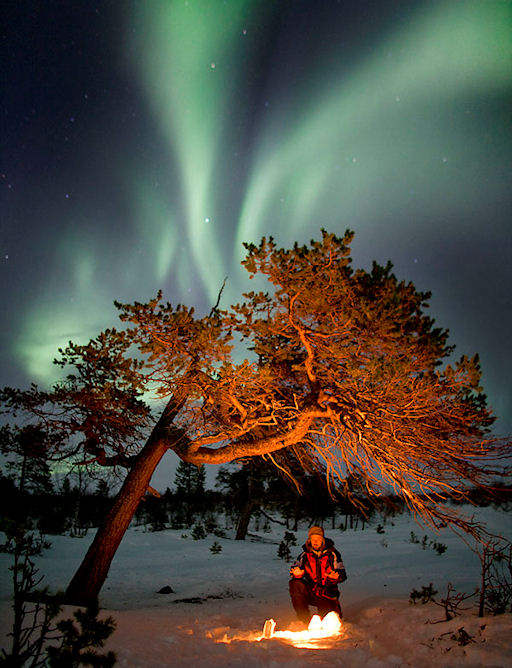Turn your cell phone into a field-tested satellite tracker. Works for Android and iPhone. | | |
COINCIDENCES: Many readers have asked if this week's terrible earthquake in Japan was connected to the contemporaneous geomagnetic storms of March 10th and 11th. In short, no. There is no known, credible evidence of solar activity triggering earthquakes. Moreover, in the historical record, there are thousands of examples of geomagnetic storms without earthquakes, and similar numbers of earthquakes without geomagnetic storms. The two phenomena are not linked.
SUBSIDING STORMS: The geomagnetic storms of March 10th and 11th are subsiding. Earth's magnetic field began shaking on March 10th in response to a CME impact; the reverberations continued for more than 24 hours. In Sweden the auroras were so bright, they competed with campfires:

"When I was sitting next to the fire and had the Aurora dancing above me, I felt like it could have been 100 years ago," says photographer Peter Rosén in Sweden's Abisko National Park. "I wonder what people thought when they saw this phenomena in centuries past. Old stories say that the Sami people believed the Aurora was home for the spirits of the dead, and that we should show respect when the lights appeared."
They could appear again, soon. A solar wind stream is heading for Earth, due to arrive on March 12th or 13th. NOAA forecasters estimate a 35% chance of geomagnetic activity during the next 24 hours. Get your aurora alerts here!
UPDATED: March 2011 Aurora Photo Gallery
[previous Marches: 2010, 2009, 2008, 2007, 2006, 2005, 2004, 2003, 2002]
X-FLARE: March 9th ended with a powerful solar flare. Earth-orbiting satellites detected an X1.5-class explosion from behemoth sunspot 1166 around 2323 UT. A movie from NASA's Solar Dynamics Observatory shows a bright flash of UV radiation plus some material being hurled away from the blast site:

Movie formats: 4 MB gif, 1.2 MB iPad, 0.3 MB iPhone
UPDATE (March 10 @ 1800 UT): Newly-arriving coronagraph data from the Solar and Heliospheric Observatory show no bright CME emerging from this eruption. Some material was surely hurled in our direction, but probably not enough for significant Earth-effects.
After four years without any X-flares, the sun has produced two of the powerful blasts in less than one month: Feb. 15th and March 9th. This continues the recent trend of increasing solar activity, and shows that Solar Cycle 24 is heating up. NOAA forecasters estimate a 5% chance of more X-flares during the next 24 hours.
SOLAR FLARE ALERTS: Would you like a call when the next X-flare erupts? Sign up for Spaceweather PHONE.

